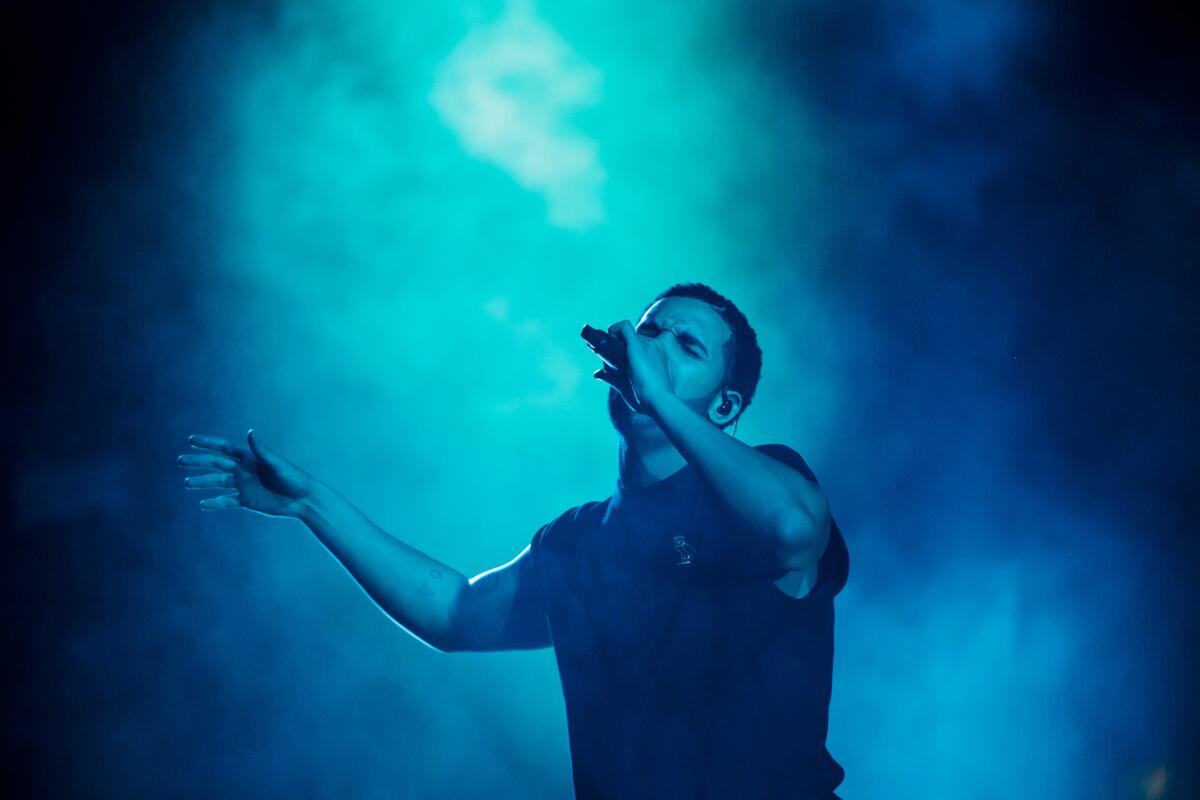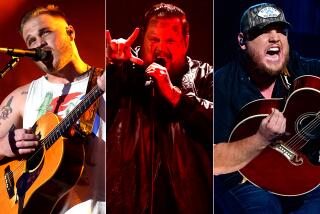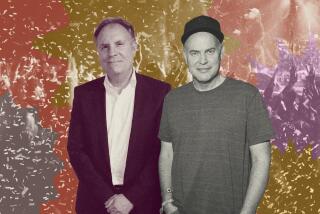At Coachella and other festivals, sponsors target young spenders

Rapper Drake performs on the main stage of the
- Share via
AC/DC, meet H&M.
Advertisers are always looking for audiences with high concentrations of young people willing to spend, spend, spend.
Enter Coachella and its ilk -- the plethora of music festivals that according to Nielsen draw 32 million people in the U.S. each year. On its own, Coachella attracted 579,000 attendees in 2014.
Nielsen’s data show that about 46%, or nearly half, of music festival-goers were in the 18-34 age range, a coveted demographic for Madison Avenue. Reaching that age group has become more difficult in recent years as millennials turn to online channels instead of TV and its commercials.
As the Los Angeles Times has reported, the bond between brands and music acts has become tighter as the music industry looks for revenue streams in places other than album sales, which have continued to decline.
In 2013, pop star Katy Perry promoted her tour with a commercial for Citigroup. Energy drink company Red Bull last year put on its 30 Days in L.A. concert series, with a different show every night in November.
Musicians benefit from the sponsorship, and companies tap into the music business’s cool factor.
Coachella, with headliners including Aussie rockers AC/DC, rapper Drake and former White Stripes frontman Jack White, has amassed a lineup of sponsors in industries including fashion (H&M, Sephora), beverages (Mio, Heineken) and music (Sirius XM, Spotify).
Festival attendees tend to spend more on music overall, Nielsen said. On average, a festival-goer will throw down $207 a year on music downloads, streaming and other live events. That may not sound like much, but it’s nearly twice what the average American spends on music.
The weekend-long gatherings are attractive for sponsors because those traveling hundreds of miles and spending $375 for a ticket to the show in Indio probably are spending more in other areas too, Nielsen Vice President Tatiana Simonian said.
People who go to Coachella are also active on social media, giving companies a lot of potential online exposure. Fashion, in particular, has made a mark. Brands just have to be careful to not be too obnoxious.
“Your activation has to be authentic,” Simonian said, adding that music fans “aren’t against brand involvements, but they are against egregious takeovers.”
Follow Ryan Faughnder on Twitter for more entertainment business coverage: @rfaughnder
More to Read
From the Oscars to the Emmys.
Get the Envelope newsletter for exclusive awards season coverage, behind-the-scenes stories from the Envelope podcast and columnist Glenn Whipp’s must-read analysis.
You may occasionally receive promotional content from the Los Angeles Times.











